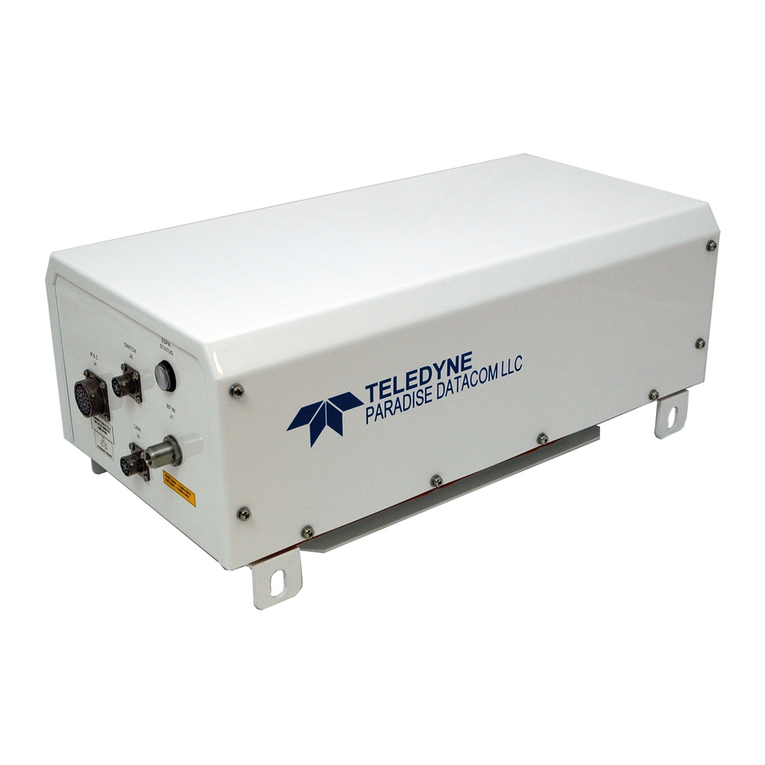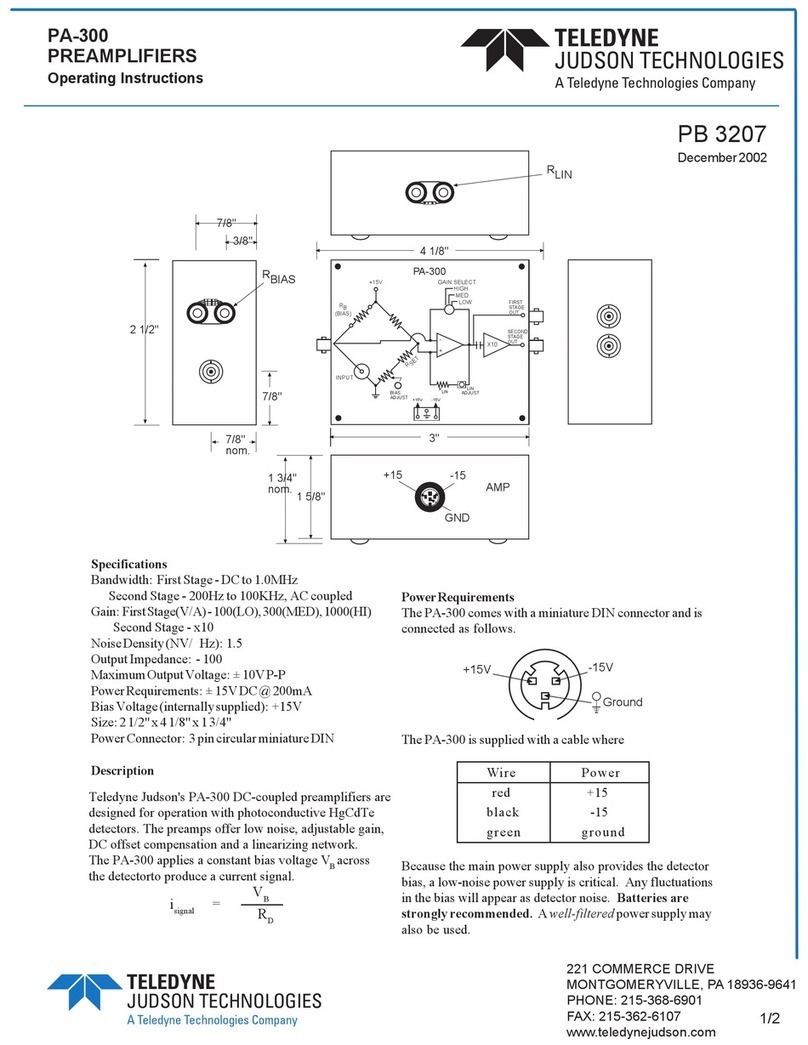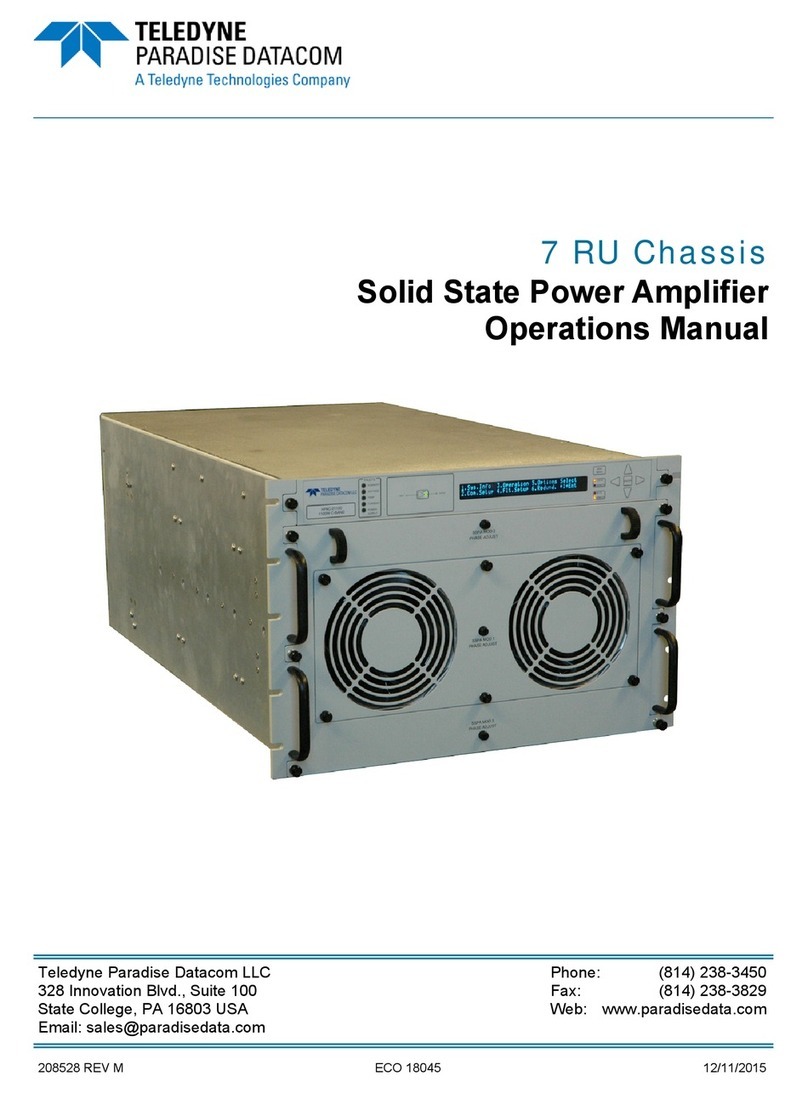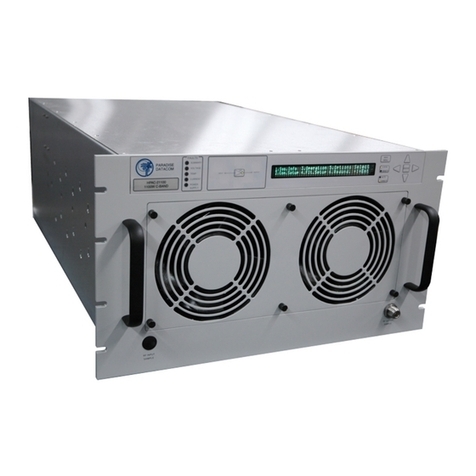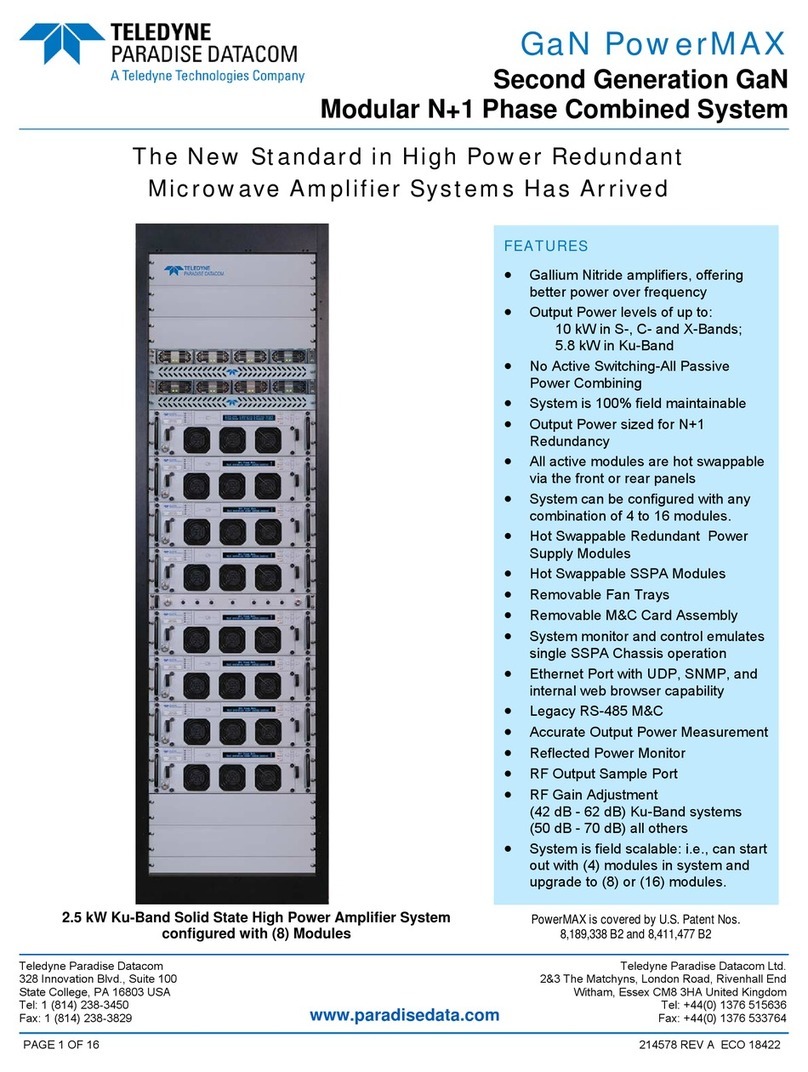
6 208143 REV C Operations Manual, HPA3, Mini Compact Outdoor SSPA
9.2.3 SNMP interface ....................................................................................... 77
9.2.3.1 SNMP MIB tree.......................................................................... 78
9.2.3.2 Description of MIB entities ......................................................... 79
9.3 M&C via SNMP ..................................................................................................... 83
9.3.1 Connecting to a MIB browser .................................................................. 84
Appendix A: Documentation............................................................................................... 85
Figures
Figure 2-1: Outline Drawing, Mini Compact Outdoor SSPA, Ku-Band ........................ 13
Figure 2-2: Mini Compact Outdoor SSPA Air Flow ..................................................... 19
Figure 2-3: Attach Mounting Supports to Unit ............................................................. 21
Figure 2-4: Install All-Thread stud ............................................................................... 22
Figure 2-5: Mount Unit to Antenna Boom.................................................................... 22
Figure 3-1: J4 connections for Ethernet Comms, Default IP Address ......................... 23
Figure 3-2: J4 connections for Ethernet Comms, User-Defined IP Address ............... 23
Figure 3-3: J4 connections for RS-485 Comms .......................................................... 24
Figure 3-4: J4 connections for RS-232 Comms .......................................................... 24
Figure 3-5: Ethernet Quick Start Cable, 207755 (Revision A and beyond) ................. 24
Figure 3-6: RS232 Quick Start Cable, 207988............................................................ 25
Figure 3-7: Universal M&C Add Unit menu ................................................................. 28
Figure 3-8: Add Compact Outdoor SSPA window, via Serial or Internet..................... 28
Figure 3-9: Universal M&C Status Window ................................................................. 29
Figure 3-10: Universal M&C, Settings......................................................................... 32
Figure 3-11: Spare Fault Wizard ................................................................................. 33
Figure 3-12: Universal M&C, IP Setup ........................................................................ 34
Figure 3-13: Preferences Window............................................................................... 35
Figure 3-14: Example, Log entry................................................................................. 35
Figure 3-15: Enter IP address for unit (default is 192.168.0.9).................................... 36
Figure 3-16: M&C Applet loading into browser window.............................................. 36
Figure 3-17: Enter password (default is “paradise”) .................................................... 37
Figure 3-18: Status and Faults window descriptions................................................... 37
Figure 3-19: Communication Settings window descriptions ........................................ 38
Figure 3-20: General Settings window descriptions .................................................... 39
Figure 3-21: Fault Settings window descriptions......................................................... 40
Figure 4-1: Configuration Matrix, Compact Outdoor SSPA, BUC Options .................. 41
Figure 4-2: Compact Outdoor Block Diagram of BUC / SSPA System ....................... 42
Figure 4-3: Mini Compact Outdoor SSPB with PD25 Evolution Modem ..................... 45
Figure 5-1: RCPF-1000 front, rear panels................................................................... 47
Figure 5-2: Outline Drawing, External L-Band to fiber interface .................................. 48
Figure 5-3: Block Diagram, Compact Outdoor with external fiber transceiver............. 49
Figure 5-4: System example, SSPA with External Fiber to L-Band Converter ............ 49
Figure 6-1: Spurious and Gain Data ........................................................................... 51
Figure 6-2: Return Loss, Intermodulation and Phase Noise Data ............................... 52
Figure 6-3: M&C, Output Power, Ground, Phase Lock and Misc. Data ...................... 53
Figure 8-1: Standard 1:1 Redundant System with coax input and w/g output............ 61
Figure 8-2: 1:1 Redundant System with input splitter substituted for input switch....... 61
Figure 8-3: 1:1 Redundant System with L Band input................................................. 62
Figure 8-4: 1:2 Redundant System Block Diagram ..................................................... 62
